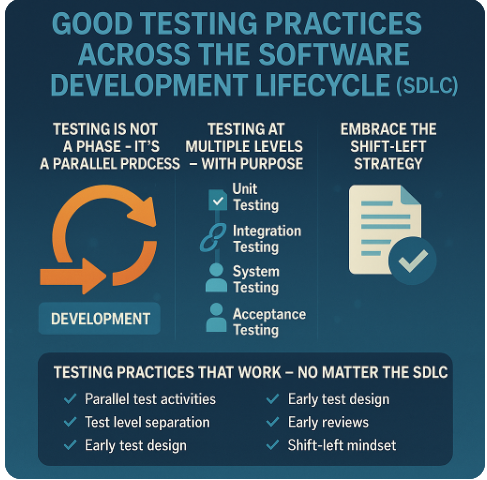In the fast-paced world of software development, quality isn’t a luxury — it’s a necessity. And testing plays a key role in delivering that quality. But how do you ensure your testing is effective, regardless of whether you’re working in Agile, Waterfall, or a hybrid model?
The answer lies in adopting good testing practices that align with the Software Development Lifecycle (SDLC) — but aren’t limited by it.
